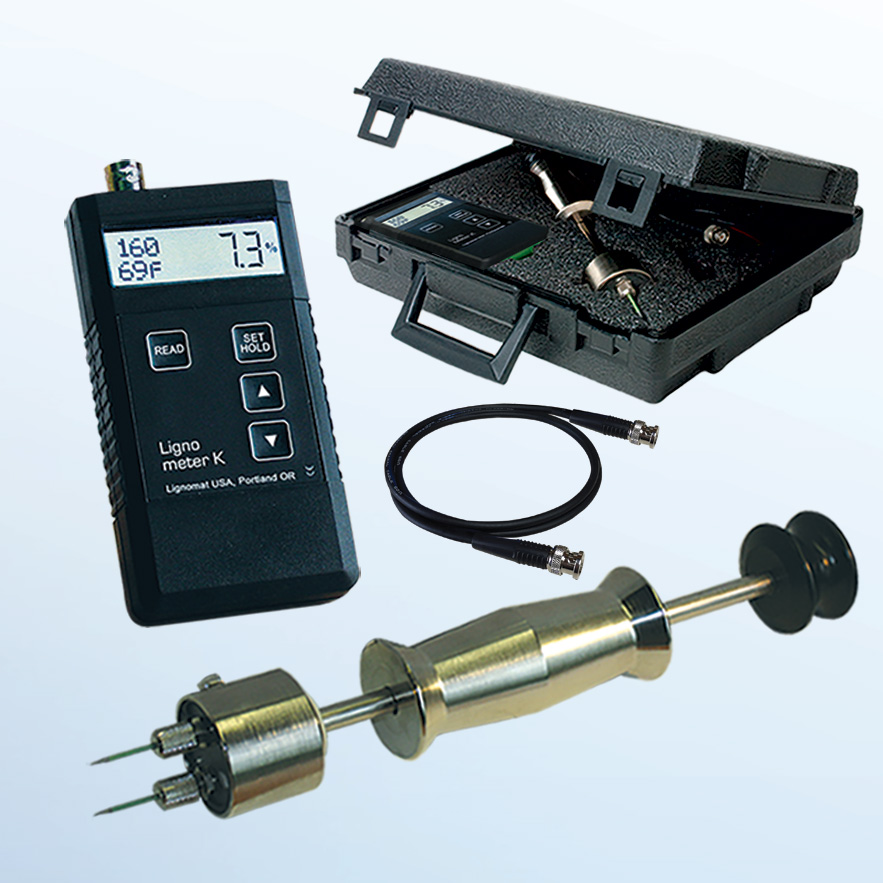Understanding the Various Kinds Of Moisture Meters and Their Applications
Understanding the Various Kinds Of Moisture Meters and Their Applications
Blog Article
Explore the Globe of Moisture Meters: Everything You Need to Know
In the realm of moisture meters lies a world of precision and functionality that frequently goes undetected. Understanding how moisture meters run, the various kinds readily available, and their diverse usages can lose light on their value in making sure high quality and efficiency.
Exactly How Moisture Meters Work
Moisture meters operate by gauging the electric conductivity or capacitance of materials to determine the wetness material present. These meters are vital devices throughout numerous industries, consisting of woodworking, building, and agriculture. By making use of different techniques such as pinless or pin-type modern technology, dampness meters provide precise readings that help experts make educated choices.
Pin-type moisture meters function by placing the sharp pins right into the product being tested. The electrical conductivity between the pins is after that determined, with greater wetness levels resulting in boosted conductivity. Moisture Meter. On the various other hand, pinless wetness meters make use of electromagnetic signals to check a bigger area without triggering any kind of damages to the product's surface. These meters are ideal for rapidly evaluating moisture degrees in huge areas or ended up products.
Despite the approach utilized, moisture meters play an essential function in protecting against concerns such as mold and mildew development, structural damage, or item issues caused by excess wetness. Understanding exactly how these meters work is crucial for making sure the quality and integrity of products in numerous applications.
Types of Moisture Meters
Provided the critical role moisture meters play in different industries, it is vital to comprehend the different kinds readily available to professionals for accurately examining wetness levels - Moisture Meter. There are mostly 2 major kinds of dampness meters: pinless and pin-type wetness meters

On the other hand, pinless wetness meters utilize electromagnetic sensing unit plates to scan a bigger area of the product without causing any damage. This kind is suitable for rapidly scanning huge areas and is frequently utilized for flooring, wall surfaces, and ceilings. Pinless meters are practical for taking analyses on finished surfaces without leaving any type of noticeable marks.
Both kinds of wetness meters have their benefits and are selected based on the particular demands of the task at hand. Understanding the differences in between these types is vital for specialists to make precise dampness analyses.
Applications Throughout Industries
Construction experts rely on wetness meters to examine the dampness levels in structure materials like timber, drywall, and concrete, which is vital for keeping architectural integrity and stopping concerns like rot or mold and mildew. The floor covering industry uses moisture meters to measure the official website wetness material in subfloors prior to mounting various flooring coverings, preventing pricey damages due to excess dampness. In the food market, moisture meters are made use of to keep an eye on and manage moisture levels in products such as grains, nuts, and dried fruits to preserve quality and high quality.
Tips for Making Use Of Moisture Meters
Make use of the moisture meter's calibration setups to make sure precise readings when determining the moisture web content in various materials. Furthermore, make certain the meter is set to the proper wetness range for the product you are determining to obtain the most specific outcomes.
When making use of a pin-type dampness meter, insert the pins to the appropriate depth advised for the material being tested. This makes sure that the moisture analyses are drawn from the proper deepness within the material, giving a much more exact depiction of its moisture material. For pinless wetness meters, keep in mind to preserve correct call with the material's surface to obtain trustworthy analyses.
Frequently inspect and replace the batteries in your dampness meter to stop unreliable analyses as a result of low power. When not in usage to lengthen its lifespan and keep its precision, Shop the meter in a completely dry and secure area. By complying with these suggestions, you can take full advantage of the performance of your moisture meter and obtain accurate wetness content measurements throughout various materials.
Upkeep and Calibration
To make sure the accuracy of dampness content dimensions, regular maintenance and calibration of the moisture meter are necessary steps in its correct performance. Calibration readjusts the wetness meter to make certain that it supplies consistent and reliable results.
Calibration ought description to be executed regularly, specifically if the dampness meter is made use of regularly or in vital applications where exact measurements are needed. By adjusting the moisture and keeping meter routinely, customers can trust the precision of the wetness web content dimensions acquired.
Conclusion

In conclusion, dampness meters play a critical role in various markets by accurately gauging the moisture web content of products. Recognizing just how these tools function, the various types readily available, and correct upkeep and calibration are crucial for obtaining reliable outcomes. Whether in building and construction, agriculture, or production, making use of wetness meters assists make certain quality assurance and effectiveness in processes.

In verdict, visit their website wetness meters play an essential function in various markets by precisely gauging the moisture material of materials.
Report this page